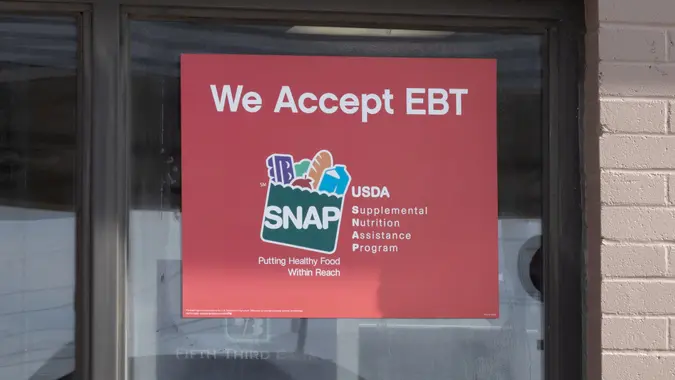4 Microsoft Scams That Target Your Money — How To Protect Yourself

Commitment to Our Readers
GOBankingRates' editorial team is committed to bringing you unbiased reviews and information. We use data-driven methodologies to evaluate financial products and services - our reviews and ratings are not influenced by advertisers. You can read more about our editorial guidelines and our products and services review methodology.

20 Years
Helping You Live Richer

Reviewed
by Experts

Trusted by
Millions of Readers
Microsoft has long been, and still remains, the king of the operating system hill. According to Statista, nearly 70% of computers, tablets and consoles run on Windows, making Microsoft — and the millions who rely on it daily — a prime target for scammers, fraudsters and criminals who tailor their attacks specifically for the company’s platforms.
Below, we’ll delve into four common scams that may arise while using Microsoft products, and how to avoid having your money or personal information stolen if you happen to come under attack.
Tech Support Scams
Tech support scams involve digital crooks posing as Microsoft IT pros calling, texting or using error messages to convince their victims to call them under the guise of spotting an urgent problem with their Microsoft software.
Once they get them on the line, the fake tech support team instructs the victim to install applications that give the criminals access to the device. Once in, they install ransomware, malware or other harmful programs to steal the victims’ information or hold their devices and data hostage.
Protect Yourself
According to the Microsoft website, the company does not make unsolicited phone calls or send emails requesting financial or personal information, it won’t ask for payment in crypto, and it doesn’t offer support without a request for help. Never call a number or click a link in an unsolicited popup.
Text Messaging Scams
Microsoft has warned its users about text messaging scams for years. Like tech support scams, the ruse is not unique to Microsoft, and the fraud’s hallmark is imposter text messages, regardless of which software you use. The criminals often pretend to be:
- A bank representative
- An IRS agent
- A package delivery service
- A sweepstakes prize notification
- A wrong number or a fake friend
No matter the cover story, the goal is always the same — to trick the victim into revealing sensitive personal and/or financial data.
Never Respond
Never reply to a text purporting to be from your bank, delivery service or other seemingly legitimate entity. Instead, call the company or organization directly to confirm or disconfirm the authenticity of the text you received.
Phishing Scams
Like text messaging and tech support scams, phishing is not unique to Microsoft, but the ubiquity of its software makes its users a prime target for the perennially perilous trap — its Teams platform is a particularly active phishing hotspot.
Phishing scammers lure victims with bait links that look like legitimate communications from reputable companies, often with sophisticated reproductions of their email templates, websites and URLs. However, upon clicking the link, the victim triggers malware downloads designed to facilitate identity theft.
Don’t Take the Bait
Always be leery of generic wording, strange URLs, bad grammar or typos, mismatched email domains, pressure and urgency, and senders marked as “external.” Don’t click a link in any email you receive. Navigate to the website independently instead.
Microsoft Teams Scams
Microsoft launched Teams in 2017 to compete with collaborative business heavyweights like Slack, and later, pandemic-era juggernauts like Zoom. As of 2024, the platform had 320 million active users, which makes it a natural target for criminals — and phishing isn’t the only landmine.
The company warns of Microsoft Teams scams, including:
- The use of malicious GIFs that allow attackers to control accounts and take over chat sessions when someone opens the image.
- Vishing, or voice phishing, which entails scammers calling or leaving voice messages purporting to be from legitimate companies designed to get their victims to reveal personal information.
- Quishing, an attack designed to get Teams users to scan malicious QR codes.
- Fake job offers that install crypto mining software when the Teams user clicks a malicious link.
Collaborate Cautiously
Use common sense and don’t let down your guard or assume Teams is a safe space. Be skeptical of any job offer that seems too good to be true or requires you to download software or click a link. Never reveal personal information on the platform, use strong passwords and change them often, verify IT requests independently and report any suspicious activity immediately.
More From GOBankingRates
 Written by
Written by  Edited by
Edited by 

























